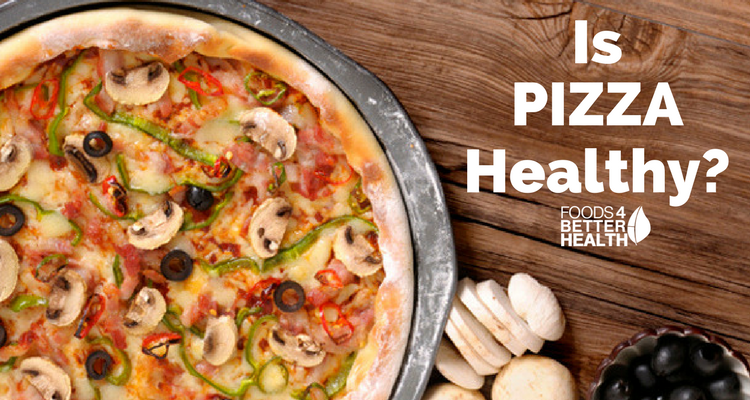
Pizza is one of the most loved and preferred foods. Any casual get-together seems incomplete without this cheesy treat. The pizza that you buy from fast-food chains or the ones bought from grocery shops all have almost the same ingredients. The soft and fresh bread is loaded with delicious toppings and gooey cheese. But, is pizza good for you, or is pizza unhealthy?
Pizza is unhealthy if you choose the wrong ingredients. Unfortunately, the pizza from fast food chains is mostly made of refined flour and contains a lot of sodium. However, it can be turned into a healthy food if it is homemade and you limit the use of cheese. Opt for a whole grain base and use plenty of veggies as toppings instead.
Is Pizza Unhealthy? Know the Nutrition Facts
Is pizza healthy on a diet? Pizza’s basic ingredients include bread or a pizza base, tomato sauce, cheese, and toppings. Of all the ingredients in pizza, cheese is healthy if eaten in moderation.
Tomato as a fruit is healthy, but tomato sauce may contain sodium, sugar, and preservatives. The base is made mostly from refined flour.
A slice of regular crust pizza with cheese contains 272 calories. It contains high levels of sodium, about 551 milligrams. The calorie and nutrient content will vary depending on the base, the amount of cheese used, and toppings.
Let’s take a look at some nutrients that may be present in a pizza.
1. Carbohydrates
One pizza slice contains 34 grams of carbs of which four grams are sugar, and two grams is fiber. According to the Dietary Guidelines for Americans, carbohydrates should form 45 to 65% of your total daily calorie intake. However, to stay healthy, you should choose the right carbs.
Complex carbs from whole grains take more time to digest since they contain fiber. They don’t cause blood sugar spikes and limit the release of insulin. Complex carbs increase metabolism, aid digestion, and indirectly help in weight loss. You can choose whole grain or whole wheat crust, or veggie-based crusts.
2. Fats
The total fat content in a slice of pizza is 10 grams, which includes four grams of saturated fats. It also contains 22 milligrams of cholesterol. The cholesterol content will vary with the toppings, cheese, and sauces used.
3. Proteins
Pizza contains 12 grams of proteins per slice. The cheese used in pizza is considered a complete source of protein. It contains all the essential amino acids needed for building muscles and repairing tissues.
A cup of shredded mozzarella cheese contains 25 grams of proteins. Other toppings like pepperoni, chicken, and red meat also contain good amounts of protein. However, these meats also have a lot of fat and cholesterol.
Is pizza unhealthy for bodybuilding? Bodybuilders require high amounts of proteins. Pizza does contain proteins, but it shouldn’t be the primary source. There are better options when it comes to protein-rich foods, such as milk and yogurt.
4. Antioxidants
Pizza usually has a layer of tomato sauce. Tomatoes are rich in antioxidants such as lycopene, folate, beta-carotene, potassium, vitamin C, flavonoids, and vitamin E. Tomato juice, sauce, and paste have higher amounts of lycopene than raw or uncooked tomatoes.
Avoid having canned tomato sauce as it contains high amounts of sugar and salt. Some companies that make sauce add 12 grams of sugar for every half cup! Try making a tomato paste at home or use sauce in moderation.
5. Vitamins and Minerals
Pizza may contain vitamins and minerals such as thiamin, riboflavin, niacin, folate, phosphorus, calcium, and selenium depending on the toppings you choose. A slice of pizza that contains veggies such as broccoli, bell peppers, olives, spinach, and other nutritious veggies may contain vitamins A, E, B, and K, as well as some minerals.
Some Harmful Effects of Pizza
So, now that you know pizza is unhealthy if it’s not homemade and depending on the ingredients used, you should also know the harmful effects it.
1. Risk of Heart Disease
Pizza satisfies your taste buds and fills up your stomach. But excessive consumption of pizza increases your blood cholesterol levels and risk of heart disease. Including pizza in your daily diet is linked to obesity.
Pizza toppings like pepperoni and meat increase saturated fat and cholesterol intake. Processed meats include salt and nitrites, and regular consumption of it may cause cancer and heart disease.
2. Increases Blood Pressure Levels
Consuming high amounts of sodium can increase blood pressure levels. A slice of pizza provides 23% of sodium, but the same serving of pepperoni pizza provides 33% of the recommended daily intake.
3. High Glycemic Index
The refined flour used to make the pizza base has a high glycemic index due to the absence of fiber. As a result, it affects blood glucose levels. One slice of pizza keeps the blood pressure elevated for six hours.
The digestive enzymes break down simple carbs and convert them into sugars. The unused sugar turns into fat. Refined grains increase stored abdominal fat, and they may also cause type 2 diabetes, heart disease, and breast cancer.
The Final Word on Pizza
So, is pizza unhealthy? Yes, it can be if you eat pizza from fast food chains daily. Is pizza unhealthy while on a diet? It depends on your intake. Ideally, you should enjoy pizza not more than three or four times a month.
You can enjoy a couple of slices, but be sure to order a pizza with lots of veggies, thin crust, lean meat such as chicken, and a limited amount of cheese. Also, ensure you do not eat it late at night before you go to bed.
If you have to have it for dinner, eat it at least two or three hours before going sleep. It is a good idea to go for a stroll after dinner. However, having it during the day is ideal.
You can make a healthy pizza with whole grain or veggie-based pizza dough. Layer it with a low-sodium and low-sugar sauce. Also, add a small serving of grass-fed dairy cheese to reap maximum benefits. Healthy toppings consisting of fresh green veggies such as kale, spinach, mushrooms, onions, and tomatoes will boost your nutrient and fiber intake.
Related:
Sources:
“Side Effects Of Eating Pizza,” iFood.tv; http://ifood.tv/facts/420442-side-effects-of-eating-pizza, last accessed April 27, 2017.
Oldham, D., “Is Pizza Bad For You?” Is It Bad For You, December 28, 2015; https://www.isitbadforyou.com/questions/is-pizza-bad-for-you, last accessed April 27, 2017.
Kamo, M., “What Eating Pizza Really Does To Your Body,” Nutrition Secrets, February 27, 2016; http://www.nutritionsecrets.com/what-eating-pizza-really-does-to-your-body/.













